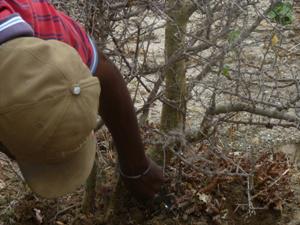Felista Mangalu
The aim of the project is to collect of live indigenous plants for establishment of a mini botanic garden, and impart conservation education to the general public mainly on indigenous plant.

The project aims at collecting live indigenous plants from northern Tanzania to the Natural History Museum – Arusha Tanzania, for establishment of a mini botanic garden. The target is to impact knowledge on conservation education to students, local people and foreigners around and those who visit the Museum yearly, and thus raising awareness to the general public. The project will educate and inspire the public to conserve indigenous plants, which are unique and area specific heritage.

Information on ecological threats, recommended conservation measures, and appeal to participatory conservation for sustainable plant resource use will be provided.
The first objective of collecting the live plants is for the establishment of a mini botanic garden to promote awareness and conservation education among the urban population of Arusha numbering 500,000 and other stakeholders. The in situ collection will be very carefully made; only a few plants collected and enough left in the field. Information will be provided on the threats caused by over-exploitation of forests and woodlands for charcoal, timber, carvings, traditional medicines, perfumery and ornamentals resulting in the impoverishment of biodiversity, land degradation and climate change. Herbarium specimens will be collected for each plant transplanted to the museum to serve as a reference material. The plants will be a tool for seeing and learning.
The second objective is to provide information on what conservation measures are being taken at the local, national and international levels and the roles individuals can play in restoration of indigenous plants. The youth are the target group considered as the future leaders and players in plant conservation.
The third objective is to make the collected plants a source of planting materials and seeds for schools, NGOs, government institutions, churches, the proliferating urban nurseries and individuals. The botanical garden will increase the level of public awareness on conservation and protection of threatened plant species, as well as conservation of indigenous species.
The mini botanic garden taken care by the museum ensures the species survival. The museum would be a source of planting and seeds material for future use. Visitors to the museum will be able to identify the plant species when they see them in the field and appreciate the role of natural forests and woodland in combating environmental degradation and climate change. They public will have increased level of understanding of the importance of indigenous plants.